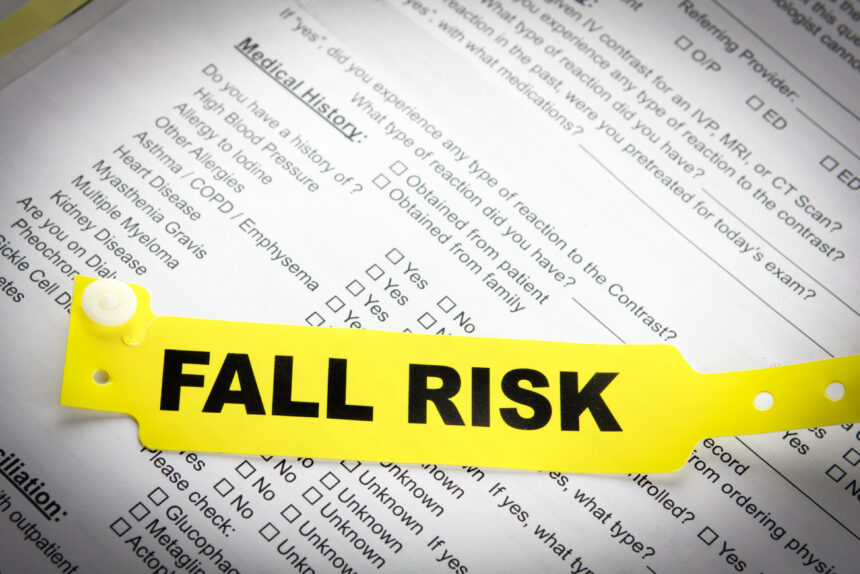Get This Report about Dementia Fall Risk
Get This Report about Dementia Fall Risk
Blog Article
Dementia Fall Risk Things To Know Before You Get This
Table of ContentsAll about Dementia Fall RiskThings about Dementia Fall RiskAn Unbiased View of Dementia Fall RiskNot known Facts About Dementia Fall Risk
A fall danger evaluation checks to see just how likely it is that you will certainly drop. It is mainly done for older adults. The analysis usually includes: This consists of a series of questions about your general wellness and if you've had previous drops or problems with balance, standing, and/or strolling. These tools check your strength, equilibrium, and gait (the method you walk).STEADI includes screening, evaluating, and treatment. Treatments are suggestions that might reduce your risk of falling. STEADI consists of 3 steps: you for your threat of succumbing to your risk factors that can be boosted to attempt to stop drops (for instance, equilibrium problems, impaired vision) to reduce your danger of falling by making use of efficient strategies (as an example, supplying education and learning and sources), you may be asked a number of questions consisting of: Have you fallen in the previous year? Do you feel unsteady when standing or strolling? Are you fretted regarding dropping?, your service provider will evaluate your strength, equilibrium, and stride, utilizing the following fall evaluation tools: This test checks your stride.
You'll rest down once again. Your supplier will check just how long it takes you to do this. If it takes you 12 secs or more, it may imply you are at greater threat for an autumn. This examination checks strength and equilibrium. You'll rest in a chair with your arms crossed over your upper body.
Relocate one foot halfway ahead, so the instep is touching the huge toe of your other foot. Relocate one foot completely in front of the other, so the toes are touching the heel of your other foot.
Dementia Fall Risk - An Overview
A lot of drops occur as a result of numerous contributing elements; as a result, handling the threat of falling begins with determining the aspects that add to fall threat - Dementia Fall Risk. Several of the most pertinent danger aspects consist of: History of previous fallsChronic medical conditionsAcute illnessImpaired stride and balance, lower extremity weaknessCognitive impairmentChanges in visionCertain high-risk medications and polypharmacyEnvironmental variables can additionally boost the danger for falls, including: Poor lightingUneven or damaged flooringWet or slippery floorsMissing or harmed handrails and order barsDamaged or improperly equipped equipment, such as beds, wheelchairs, or walkersImproper use of assistive devicesInadequate supervision of individuals residing in the NF, consisting of those that exhibit hostile behaviorsA effective autumn danger monitoring program requires a comprehensive professional evaluation, with input from all members of the interdisciplinary group

The treatment plan must additionally consist of treatments that are system-based, such as those that promote a safe setting (appropriate lights, handrails, grab bars, etc). The efficiency of the interventions ought to be examined regularly, and the treatment plan modified as necessary to mirror changes in the loss danger evaluation. Applying a loss threat monitoring system making use of evidence-based ideal practice can decrease the prevalence of falls in the NF, while limiting the potential for fall-related injuries.
Our Dementia Fall Risk Statements
The AGS/BGS standard advises evaluating all grownups matured 65 years and older for loss threat annually. This testing contains asking clients whether they have actually dropped 2 or even more times in the previous year Website or looked for clinical focus for a loss, or, if they have not dropped, whether they really feel unsteady when strolling.
Individuals who have dropped when without injury must have their balance and gait evaluated; those with gait or equilibrium abnormalities need to get added assessment. A history of 1 autumn without injury and without gait or balance issues does not call for additional assessment beyond continued yearly loss danger screening. Dementia Fall Risk. An autumn danger evaluation is called for as part of the Welcome to Medicare examination

10 Simple Techniques For Dementia Fall Risk
Documenting a falls background is one of the quality indications for loss avoidance and management. Psychoactive drugs in specific are independent forecasters of falls.
Postural hypotension can typically be relieved by lowering the dose of blood pressurelowering medications and/or quiting medications that have orthostatic hypotension as a negative effects. Use above-the-knee assistance pipe and resting with the head of the bed boosted might also decrease postural decreases in high blood pressure. The preferred components of a fall-focused checkup are shown in Box 1.

A yank time higher than or equivalent to 12 secs suggests high fall risk. The 30-Second Chair Stand test analyzes reduced extremity strength and balance. Being incapable to stand from a chair of knee elevation without using one's arms suggests increased fall risk. The 4-Stage Balance test evaluates static balance by having the patient stand in 4 positions, each gradually more difficult.
Report this page